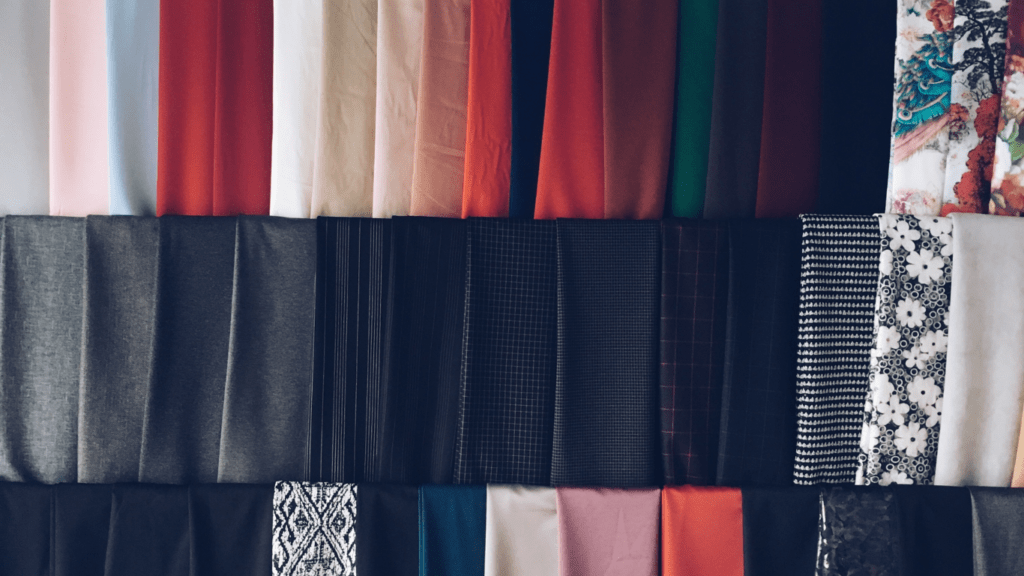Understanding Synthetic Fabrics
Synthetic fabrics, made from man-made fibers, dominate the textile industry. These fabrics boast various advantages, but it’s crucial to know their origins and types.
What Are Synthetic Fabrics?
Synthetic fabrics refer to textiles engineered from chemical substances. Unlike natural fibers such as cotton and wool, synthetic fabrics originate from polymers derived from petroleum-based products.
During production, these polymers undergo extrusion through spinnerets to form continuous filaments.
Manufacturers often opt for synthetic fabrics due to their advantageous properties, including:
- water resistance
- durability
- resistance to various environmental conditions
Additionally, these fabrics are versatile, making them suitable for numerous applications — from fashion apparel to outdoor gear.
Common Types of Synthetic Fibers
Several synthetic fibers stand out due to their widespread use:
- Polyester: Predominantly used in clothing, home furnishings, and industrial applications, polyester is known for being lightweight, resistant to shrinking and stretches, and quick-drying.
- Nylon: Initially developed as a silk substitute, nylon finds applications in hosiery, swimwear, and outdoor equipment. It’s appreciated for its strength, elasticity, and resistance to abrasions.
- Acrylic: Used primarily in knitwear and outdoor products, acrylic fibers mimic the properties of wool. They offer warmth, moisture-wicking capabilities, and resilience against moths and chemicals.
- Spandex (Lycra/Elastane): Employed primarily in sportswear and activewear, spandex is renowned for its exceptional elasticity, enabling garment stretch without losing shape.
- Rayon: Often classified as semi-synthetic, rayon is made from cellulose fibers and exhibits a silk-like feel. Predominantly used in clothing and home textiles, it blends easily with other fibers.
Understanding these different types of synthetic fibers helps consumers make informed choices, balancing functionality with environmental considerations.
The Link Between Synthetic Fabrics and Microplastics

Synthetic fabrics, used widely in clothing and textiles, are a significant source of microplastics. Understanding how these materials contribute to pollution helps consumers make informed decisions.
How Synthetic Fabrics Contribute to Microplastic Pollution
Synthetic fabrics like polyester, nylon, and acrylic release microplastics into the environment. During regular wear and washing, fibers break off and enter water systems.
Research by the International Union for Conservation of Nature shows that 35% of primary microplastics in oceans come from synthetic textiles. Examples include polyester fleece jackets, which shed numerous fibers with each wash.
The Impact of Washing and Wearing
Washing synthetic garments accelerates microplastic pollution. A study by the University of California, Santa Barbara, found that a single synthetic jacket can release up to 250,000 microfibers per wash.
These tiny fibers, measuring less than 5mm, bypass wastewater treatment plants and end up in aquatic environments. Wearing synthetic clothes leads to fiber shedding due to friction.
Activities like walking or exercising can cause fibers to break off and disperse into the air and land.
By recognizing these factors, consumers can take steps to minimize their environmental footprint. For instance, using washing bags designed to capture microfibers and opting for natural fibers can help reduce microplastic pollution.
Environmental and Health Impacts
Synthetic fabrics’ environmental and health impacts are significant. Microplastics released from these materials affect both marine life and human health.
Effects on Marine Life
Microplastics from synthetic fabrics considerably harm marine ecosystems. Marine animals like fish, plankton, and shellfish ingest these particles, mistaking them for food.
According to a 2019 study by the Environmental Science & Technology journal, microplastics were found in 114 marine species, with over half consumed by humans.
This ingestion disrupts marine food webs, causes physical harm, and can release toxic chemicals. Consequently, seafood carries these contaminants, impacting the diet and health of apex predators, including humans.
Implications for Human Health
Microplastics also pose risks to human health. When synthetic clothes shed fibers, these get into the air, water, and food supply.
Studies from the International Journal of Environmental Research and Public Health indicate that microplastics can enter the human body through ingestion and inhalation, accumulating in organs.
Potential health issues include inflammation, immune response disruption, and chemical exposure from additives. Understanding these risks underlines the necessity of addressing synthetic fabric pollution.
Mitigating the Effects of Synthetic Fabrics
Mitigating the impact of synthetic fabrics on the environment and health requires a multi-faceted approach. Advancements in technology and consumer behavior play crucial roles.
Innovations in Fabric Technology
Innovations in fabric tech aim to reduce the environmental footprint of synthetic fabrics. Several companies are developing biodegradable synthetic fibers. These new materials break down faster and don’t leave harmful residues.
For example, biotech firm Mango Materials creates fibers from methane that are both biodegradable and petroleum-free.
Recycled polyester from post-consumer plastic bottles is another innovation. Brands like Patagonia use these materials, reducing waste and conserving resources.
Additionally, researchers are exploring nanocoating technologies to minimize fiber shedding during washing. These coatings can significantly decrease the release of microplastics.
Responsible Consumer Practices
Consumers can adopt practices to lessen the impact of synthetic fabrics. Using washing bags like Guppyfriend captures microfibers, preventing them from entering water systems. Washing clothes less frequently and at lower temperatures also reduces fiber shedding.
Choosing clothes made from natural fibers like cotton, wool, and hemp is another effective strategy. These materials don’t release microplastics, offering a sustainable alternative to synthetics.
Supporting brands committed to sustainable practices influences the market toward more eco-friendly options.
Educating oneself on garment care extends the life of clothes, reducing the need for frequent replacements. Repairing and reusing clothes curbs the demand for new fabrics, mitigating environmental impact.
If consumers become more conscious of their choices, it can lead to significant reductions in synthetic fabric pollution.


 is a passionate advocate for organic farming and sustainability, contributing extensively to Eco Elegance Technique. With a deep understanding of sustainable agricultural practices, Steveno has focused his career on educating others about the environmental benefits and challenges of organic farming. His work emphasizes the importance of soil health, biodiversity, and ethical farming practices. Steveno’s insights have helped shape the platform’s commitment to promoting eco-friendly solutions in the beauty and fashion industries.
is a passionate advocate for organic farming and sustainability, contributing extensively to Eco Elegance Technique. With a deep understanding of sustainable agricultural practices, Steveno has focused his career on educating others about the environmental benefits and challenges of organic farming. His work emphasizes the importance of soil health, biodiversity, and ethical farming practices. Steveno’s insights have helped shape the platform’s commitment to promoting eco-friendly solutions in the beauty and fashion industries.
